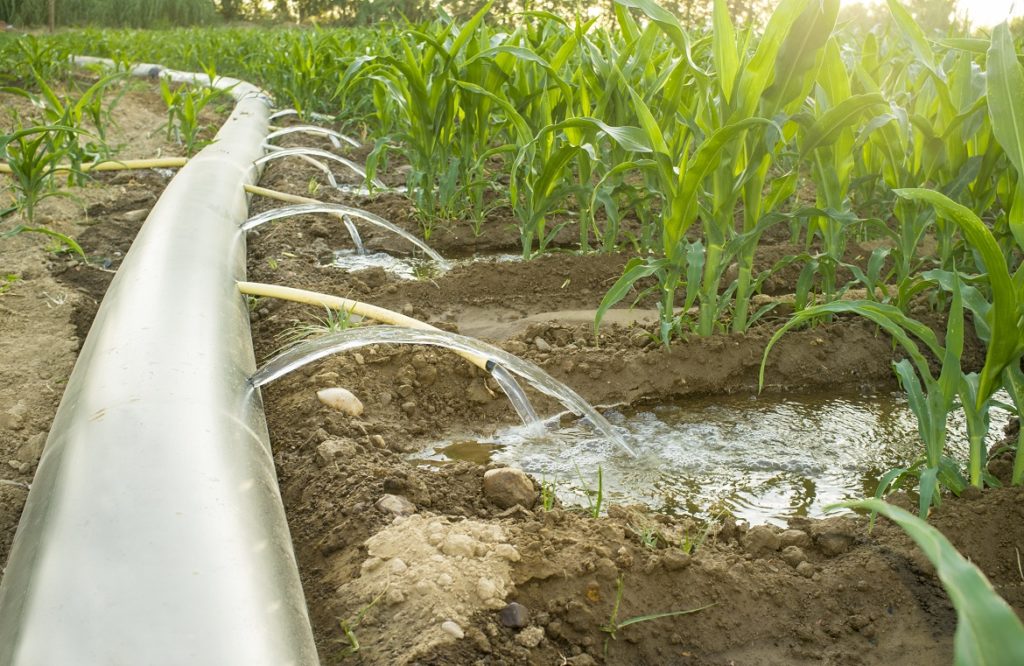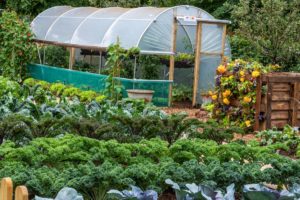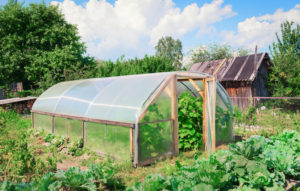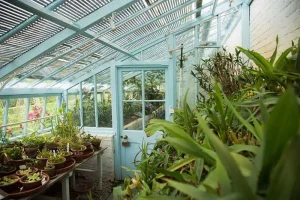Off-grid desert farming presents unique challenges when it comes to irrigation.
In this arid environment, water is scarce and precious, making every drop count.
That’s why a well-designed irrigation system is important to ensure your crops receive the right amount of moisture without wasting precious resources.
By considering factors such as crop type, soil quality, weather conditions, and water source, you can create an efficient irrigation system that maximizes yield while minimizing waste.
We’ll explore the key components of a reliable and effective off-grid desert farm irrigation system to help your crops thrive in these harsh conditions.
Assess your water needs
Determine the amount of water your crops and livestock require, and factor in any evapotranspiration losses.
To ensure a successful and sustainable operation, it’s important to assess your water needs carefully.
Determine the amount of water your crops and livestock require, taking into account factors such as crop type, soil type, weather conditions, and the specific needs of each species.
For example, certain crops such as alfalfa or corn require more water than others like wheat or oats.
Similarly, livestock such as cattle or sheep need more water than others like chickens or ducks.
Another important consideration is evapotranspiration, the process by which water is transferred from the land to the atmosphere through plants and animals.
This can result in significant losses, particularly in arid desert environments.
To mitigate these losses, it’s essential to implement efficient irrigation systems and crop selection, as well as adopt best practices for livestock management and feeding strategies.
By carefully assessing your water needs and taking steps to minimize evapotranspiration losses, you can ensure a productive and sustainable offgrid desert farming operation.
Choose the right irrigation method
Consider drip irrigation, sprinkler irrigation, or micro-jet irrigation, depending on your specific crop and land requirements.
Offgrid desert farming is a challenging yet rewarding endeavor, and choosing the right irrigation method is important to ensure a successful harvest.
Drip irrigation, sprinkler irrigation, and micro-jet irrigation are three popular methods to consider, each with its own strengths and weaknesses.
Drip irrigation delivers water directly to the roots of the plants, reducing evaporation and runoff, and is particularly effective for crops like tomatoes and cucumbers.
Sprinkler irrigation covers a wider area, making it ideal for row crops like corn and wheat.
Micro-jet irrigation is a low-pressure system that uses small, precisely controlled nozzles to deliver water directly to the plants, reducing water waste and runoff.
When selecting an irrigation method, it is important to consider the specific crop and land requirements, as well as the availability of water and energy resources.
By carefully choosing the right irrigation method, offgrid desert farmers can optimize water use efficiency and ensure a healthy and productive farm.
Use a water-efficient distribution system
Drip irrigation is the most efficient, as it delivers water directly to the roots of the plants, minimizing waste.
One of the most important aspects of successful offgrid desert farming is optimizing water usage.
Drip irrigation is an excellent solution for this, as it delivers water directly to the roots of the plants, minimizing waste and ensuring that every drop is used efficiently.
Unlike traditional flood irrigation methods, which can result in up to 70% of water being lost through evaporation and runoff, drip irrigation has been shown to reduce water usage by up to 50%.
This is particularly important in arid desert regions, where water is scarce and often has to be carefully rationed.
By investing in a drip irrigation system, offgrid desert farmers can rest assured that they are using this precious resource to its fullest potential, while also enjoying healthier and more productive crops.
I hope this helps!
Implement a timed watering schedule
Use a timer to ensure your irrigation system runs for the right amount of time each day, taking into account the needs of your crops and the climate.
One of the most effective ways to optimize your irrigation system for offgrid desert farming is to implement a timed watering schedule.
This involves using a timer to ensure that your irrigation system runs for the right amount of time each day, taking into account the needs of your crops and the climate.
By setting a specific watering schedule, you can ensure that your crops receive the appropriate amount of water, without over-watering or under-watering.
For example, you might set the timer to run for 15 minutes in the morning and 15 minutes in the evening, or for a longer period during particularly hot and dry days.
This approach will help you to conserve water, reduce evaporation, and optimize your crop yields.
By using a timer, you can easily adjust your watering schedule as needed, based on changes in the climate, soil conditions, or the specific needs of your crops.
Monitor soil moisture levels
Regularly check the moisture levels in your soil to ensure it’s not too dry or too wet, and adjust your watering schedule accordingly.
Offgrid desert farming presents unique challenges, such as limited water resources and extreme temperature fluctuations.
To ensure a successful harvest, it is essential to monitor soil moisture levels regularly.
Soil moisture sensors can help you determine the optimal watering schedule for your crops, based on the soil’s water-holding capacity and the evapotranspiration rate.
This information can help you avoid overwatering or underwatering, which can lead to poor plant growth, pests, and diseases.
By checking soil moisture levels, you can ensure your crops receive the appropriate amount of water at the right time, and you can adjust your watering schedule accordingly.
Monitoring soil moisture levels can help you identify any changes in soil health, such as salinity or nutrient deficiencies, and take corrective actions before they impact your crops.
By investing in soil moisture sensors and regularly monitoring your soil’s moisture levels, you can improve the efficiency and productivity of your offgrid desert farming operations.
Use a rainwater harvesting system
Collecting and storing rainwater can help supplement your irrigation needs, especially during periods of low rainfall.
One of the most efficient and cost-effective ways to supplement your irrigation needs in offgrid desert farming is to use a rainwater harvesting system.
This involves collecting and storing rainwater during periods of heavy rainfall, and then using that water to irrigate your crops during periods of drought or low rainfall.
By capturing and storing rainwater, you can make the most of this precious resource, and reduce your reliance on expensive and unsustainable sources of water.
Rainwater harvesting systems can be as simple or as complex as you need them to be, depending on your specific needs and resources.
For example, you might start by installing a simple rain barrel or cistern to collect and store rainwater, and then use that water to irrigate your crops using drip irrigation or other efficient methods.
Or, you might invest in a more sophisticated system that includes filters, pumps, and storage tanks to ensure that your rainwater is safe and clean, and that it can be easily accessed and distributed to your crops as needed.
Regardless of the specifics of your rainwater harvesting system, the key is to design and implement a system that is tailored to your specific needs and resources, and that takes into account the unique challenges and opportunities of offgrid desert farming.
By doing so, you can ensure that you are able to collect, store, and use rainwater in the most efficient and effective way possible, and that you are able to maintain a healthy and productive farm even in the face of drought and other challenges.
Use shading to reduce evaporation
Shade your crops during the hottest parts of the day to reduce evaporation and conserve water.
Shading is a simple yet effective technique for reducing evaporation and conserving water in offgrid desert farming.
By providing shade over your crops during the hottest parts of the day, you can significantly reduce the amount of water lost through evaporation.
This is especially important in arid regions where water is scarce and temperatures can soar.
By implementing shading techniques, you can not only reduce the amount of water used in your garden, but also help to protect your crops from the harsh desert sun.
Offgrid desert farming with shading can be a game-changer for those looking to live more sustainably and self-sufficiently in challenging climates.
I hope this information is helpful and provides you with actionable steps you can take to reduce evaporation and conserve water in your offgrid desert farming endeavors!
I would like to mention that offgrid desert farming is a unique and rewarding endeavor that can provide a sense of self-sufficiency and fulfillment.
By implementing shading techniques and other sustainable practices, you can create a thriving garden oasis in even the most challenging desert environments.
Use mulch to retain moisture
Mulch around your crops can help retain moisture in the soil, reducing the need for frequent watering.
Offgrid desert farming can be a challenging yet rewarding venture, and one effective technique to maximize crop yields in arid environments is to use mulch to retain moisture.
Mulching involves layering organic materials such as straw, wood chips, or leaves around the base of crops to prevent soil erosion and retain moisture.
By placing a thin layer of mulch around your crops, you can help retain moisture in the soil, reducing the need for frequent watering.
This is especially important in desert environments where water is scarce and evaporation is high.
Mulch can help regulate soil temperature, keeping it cooler during the day and warmer at night, which can improve crop growth and productivity.
When using mulch in offgrid desert farming, it’s essential to choose the right materials and maintain them properly to ensure optimal results.
For instance, it’s best to avoid using plastic or synthetic materials that can leach chemicals into the soil and harm your crops.
Instead, opt for natural materials like straw or wood chips that are abundant, renewable, and free of harmful chemicals.
Proper maintenance also involves regularly checking the mulch layer for weeds, debris, or pests and replenishing it as needed.
By incorporating mulch into your offgrid desert farming strategy, you can significantly improve soil health, reduce water consumption, and increase crop yields.
Want More? Dive Deeper Here!
Hey there! If you’re the type who loves going down the rabbit hole of information (like we do), you’re in the right spot. We’ve pulled together some cool reads and resources that dive a bit deeper into the stuff we chat about on our site. Whether you’re just killing time or super into the topic, these picks might just be what you’re looking for. Happy reading!
- (PDF) Design and Simulation of Solar Powered Water Pumping System for Irrigation Purpose in Kaduna, Nigeria | Innovative Research Publications and Oyefolahan Oyedokun – Academia.edu
- (PDF) PV WATER PUMPING SYSTEMS FOR AGRICULTURAL APPLICATIONS PV WATER PUMPING SYSTEMS FOR AGRICULTURAL APPLICATIONS | karuppaiya aravinth – Academia.edu






